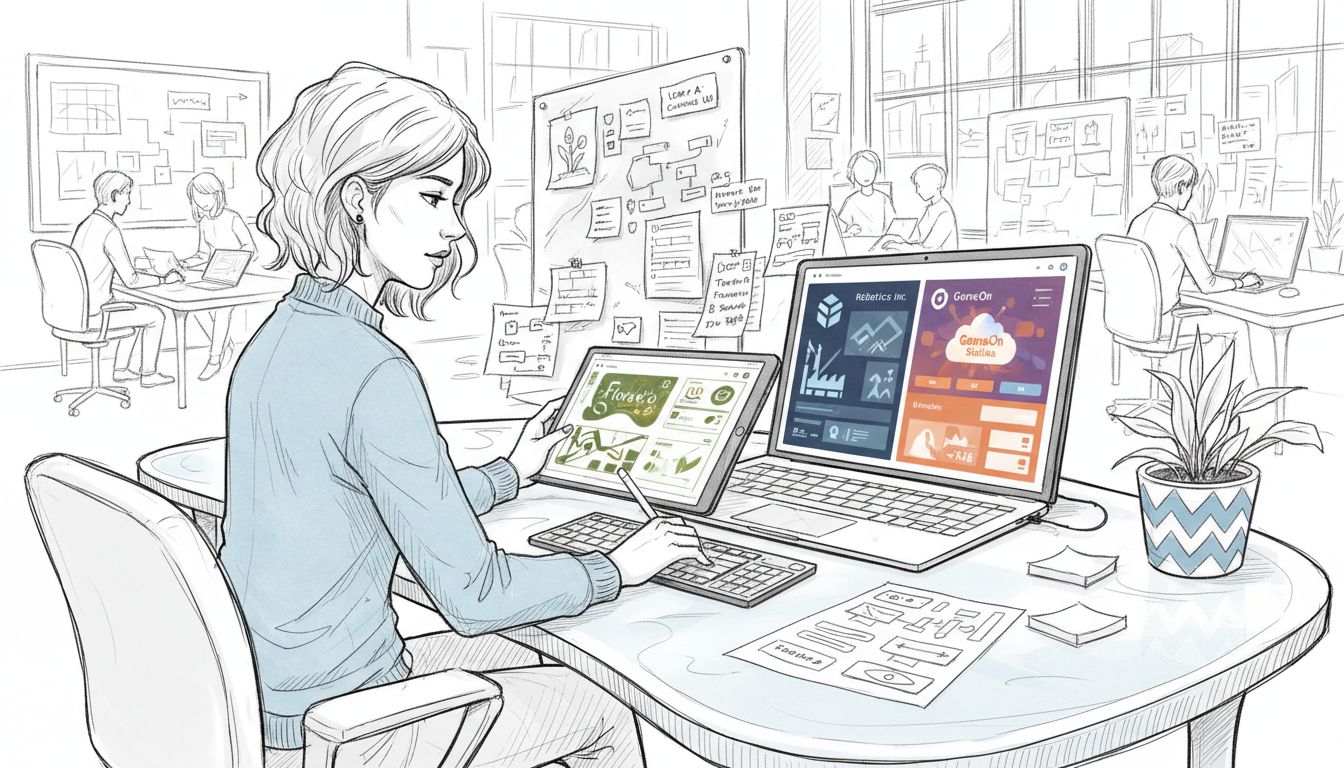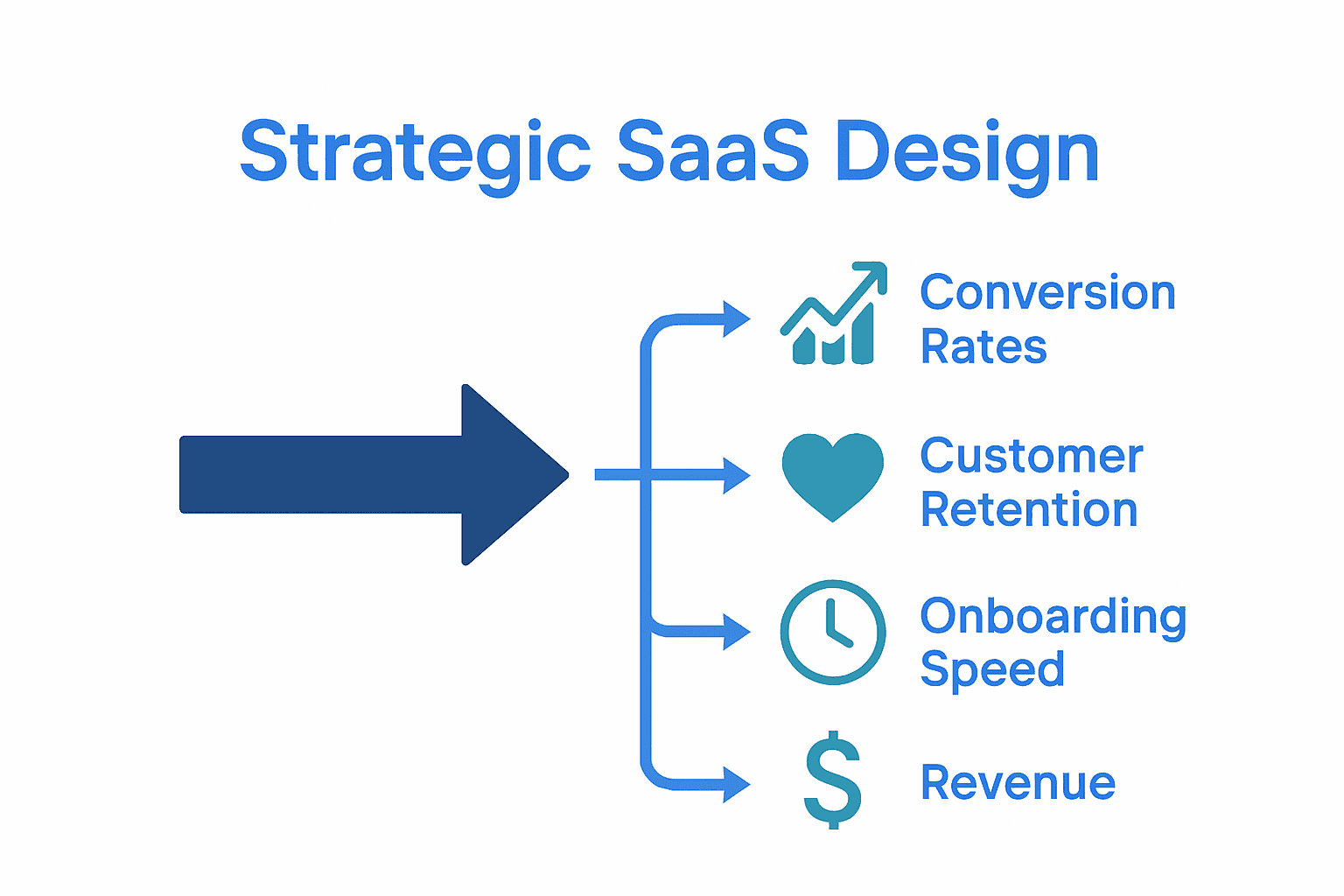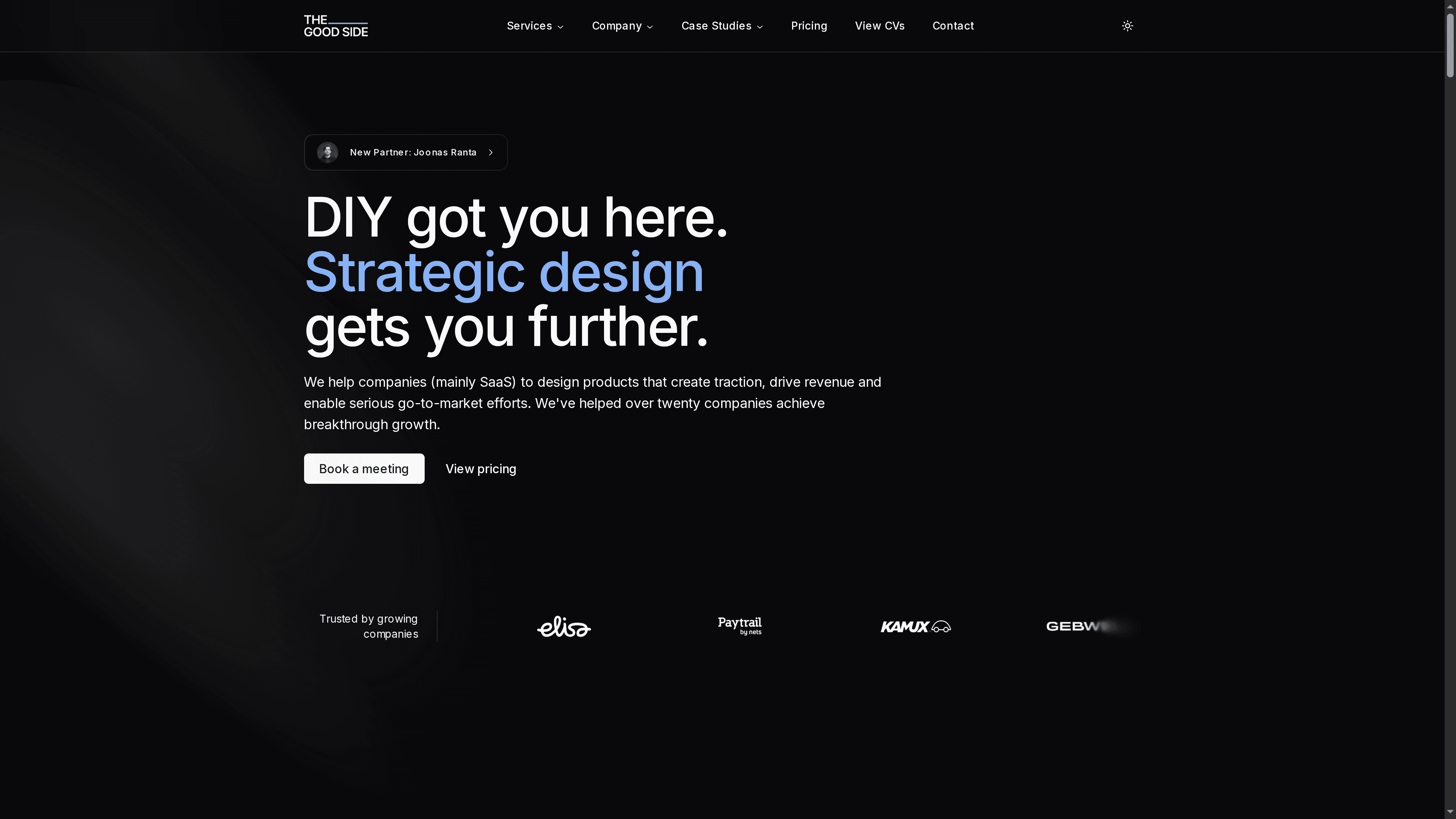Role of Designers in SaaS: Complete Expert Guide
Comprehensive guide to the role of designers in SaaS: UI/UX specialization, user journey optimization, design processes, and real business impact.

Most american SaaS companies see design as a driving force for growth, with research showing that strong design can lift conversion rates by over 200 percent. As digital competition intensifies, the success of any software now depends on exceptional user experiences and seamless product journeys. This overview highlights how designers shape these outcomes—building not just appealing interfaces, but solutions that align user needs with business priorities and deliver measurable results.
Table of Contents
- Defining The Role Of Designers In SaaS
- Specialized Design Functions For SaaS Products
- Design Process: From Audit To Integration
- Impact On User Journeys And Business Metrics
- Collaboration Models And Common Pitfalls
Key Takeaways
| Point | Details |
|---|---|
| Strategic Role of Designers | Designers in SaaS are key to transforming software into user-centric experiences that align with business goals. |
| Specialized Design Functions | Tailored design functions enable SaaS products to provide customizable and adaptive user experiences. |
| Holistic Design Process | A systematic design process from audit to implementation ensures alignment with user and organizational needs. |
| Impact on Business Metrics | Effective design optimizes user journeys, enhancing conversion rates and customer retention, leading to revenue growth. |
Defining the Role of Designers in SaaS
Designers in Software as a Service (SaaS) are strategic architects who transform digital products from functional tools into intuitive, user-centered experiences. Unlike traditional software development roles, SaaS designers focus on creating seamless, engaging interfaces that solve complex user problems while driving business growth. According to research from jucs.org, these professionals play a critical role in aligning user perspectives with business objectives.
The core responsibilities of SaaS designers extend far beyond aesthetic considerations. They are responsible for crafting user journeys, optimizing interaction flows, and ensuring that every touchpoint within a digital product creates value. Arxiv.org emphasizes that designers are crucial in developing scalable architectures that maintain user experience integrity while supporting long-term product evolution.
Key dimensions of a SaaS designer’s role include:
- User Research: Understanding user needs through interviews, surveys, and behavioral analysis
- Interface Design: Creating intuitive, responsive layouts that guide users efficiently
- Interaction Design: Developing meaningful interactions that enhance user engagement
- Product Strategy: Aligning design choices with broader business and user goals
Successful SaaS designers blend technical understanding, psychological insights, and creative problem-solving to transform complex software into accessible, enjoyable experiences. Explore our comprehensive guide on service design to understand how these professionals create cohesive digital ecosystems that drive user satisfaction and business growth.
Specialized Design Functions for SaaS Products
Specialized design functions in SaaS are sophisticated approaches that transform generic software solutions into tailored, adaptable experiences for diverse user needs. Research from Arxiv.org introduces a multi-dimensional customization model that demonstrates how designers create nuanced, flexible interfaces capable of meeting complex tenant requirements.
Product Customization Design emerges as a critical specialized function, enabling SaaS platforms to offer personalized experiences across different user segments. Designers strategically develop modular interface components that can be dynamically reconfigured, ensuring that each user encounters a uniquely relevant interaction environment. By implementing adaptive design strategies, these professionals create systems that feel simultaneously standardized and individualized.

Key specialized design functions include:
- Tenant-Specific Interface Adaptation: Developing flexible design systems that adjust to unique organizational workflows
- Contextual User Experience Engineering: Creating interfaces that anticipate and respond to specific user behavioral patterns
- Scalable Design Infrastructure: Building design frameworks that support seamless platform expansion
- Cross-Platform Consistency: Maintaining uniform user experiences across multiple device types and access points
Additionally, emerging technologies are expanding design possibilities. Arxiv.org highlights innovative approaches like blockchain-enabled feedback systems, which introduce new dimensions of user interaction design. Learn more about advanced SaaS design strategies in our comprehensive guide to understand how cutting-edge design functions are reshaping digital product experiences.
Design Process: From Audit to Integration
The SaaS design process represents a strategic journey from initial assessment to seamless product implementation, transforming abstract concepts into functional digital experiences. According to research from Jiem.org, this comprehensive approach involves a systematic evaluation of existing IT landscapes before diving into design and integration phases, ensuring that every design decision is purposeful and aligned with organizational goals.
Design Auditing serves as the critical first phase, where designers conduct an in-depth analysis of current systems, user behaviors, and potential improvement opportunities. This foundational step involves gathering comprehensive insights through user interviews, behavioral analytics, and technical infrastructure assessments. By meticulously mapping existing user experiences and identifying friction points, designers create a robust blueprint for transformative design interventions.
Key stages of the design process include:
- Comprehensive System Audit: Evaluating current interface performance and user interaction patterns
- User Experience Mapping: Documenting existing user journeys and identifying potential enhancement areas
- Design Strategy Development: Creating a structured approach to address identified challenges
- Iterative Prototype Creation: Developing and refining design solutions through continuous feedback
Ideas.repec.org emphasizes that successful SaaS design integration requires a holistic approach that balances technical feasibility with user-centric design principles. Explore our comprehensive guide on effective UI design steps to understand how top SaaS teams transform design audits into cohesive, high-performing digital products.
Impact on User Journeys and Business Metrics
Designers in SaaS play a transformative role in connecting user experiences directly to business performance, creating intricate pathways that drive engagement, retention, and revenue growth. Research from Arxiv.org highlights how strategic design approaches, particularly through collaborative product design and cloud computing technologies, can fundamentally reshape user interactions and organizational outcomes.
User Journey Optimization emerges as a critical mechanism for translating design insights into tangible business value. By meticulously mapping each interaction point, designers create seamless experiences that reduce friction, enhance user satisfaction, and ultimately drive key performance indicators. This approach goes beyond aesthetic improvements, focusing on creating intuitive navigation paths that guide users effortlessly through complex digital ecosystems.
Key impacts of strategic design on business metrics include:

- Conversion Rate Enhancement: Reducing abandonment through streamlined user experiences
- Customer Retention Improvement: Creating engaging interfaces that encourage long-term platform usage
- Onboarding Efficiency: Simplifying initial user interactions to accelerate product adoption
- Revenue Acceleration: Designing intuitive pathways that reduce barriers to purchase and upgrade
Arxiv.org emphasizes the critical role of customer feedback systems in refining these design strategies. Explore our comprehensive guide on optimizing user journeys to understand how thoughtful design can transform user interactions into sustainable business growth.
Collaboration Models and Common Pitfalls
Effective collaboration between designers, developers, and product teams is the cornerstone of successful SaaS product development. According to research from Arxiv.org, collaborative product design in cloud computing environments requires sophisticated coordination mechanisms that go beyond traditional workplace interactions. These models demand seamless communication, shared understanding, and flexible approaches to problem solving.
Cross-Functional Collaboration represents the most advanced approach to SaaS design, breaking down traditional organizational silos and creating integrated teams with shared objectives. This model requires designers to develop strong interpersonal skills, technical understanding, and the ability to translate complex design concepts into actionable technical requirements. By establishing clear communication protocols and shared design language, teams can mitigate potential misunderstandings and streamline the product development process.
Common collaboration challenges and strategies include:
- Communication Gaps: Developing standardized design documentation and shared glossaries
- Technical Misalignment: Creating cross-disciplinary workshops to bridge design and development perspectives
- Workflow Friction: Implementing collaborative tools and agile methodologies
- Feedback Integration: Establishing structured feedback loops across different team functions
Arxiv.org emphasizes the importance of systematic feedback mechanisms in refining collaborative processes. Explore our comprehensive guide on product design workflows to understand how top SaaS teams build high-performance collaborative environments.
Unlock the Full Potential of Your SaaS Product with Expert Design Support
The article highlights the critical challenges SaaS teams face including disconnected user journeys, complex tenant-specific interfaces, and the need for strategic design that truly aligns with business goals. When design processes feel overwhelming or disjointed, product activation stalls and user retention suffers. This is where skilled, specialized designers make all the difference by turning fragmented experiences into cohesive, high-performing ecosystems that drive engagement and revenue growth.

Take the next step to elevate your SaaS product with The Good Side Oy. Our senior designers specialize in UI/UX design, user research, and end-to-end user journey optimization tailored for SaaS businesses. We start with a free design audit to identify pain points from your users perspective. Flexible collaboration options mean you can scale quickly without traditional hiring delays. Learn how we deliver measurable outcomes through coordinated integration and strategic positioning at goodside.fi. See how you can overcome common design and collaboration challenges by exploring our expert guides and services. Don’t wait for your product to fall behind. Visit The Good Side today and turn your SaaS design challenges into growth opportunities.
Frequently Asked Questions
What are the main responsibilities of designers in SaaS?
Designers in SaaS are responsible for crafting user journeys, optimizing interaction flows, and ensuring that every touchpoint within a digital product creates value, all while aligning user perspectives with business objectives.
How do SaaS designers enhance user experiences?
SaaS designers enhance user experiences by conducting user research, creating intuitive interface designs, engineering meaningful interactions, and aligning design choices with product strategy to support user needs and business goals.
What is the significance of collaboration in SaaS design?
Collaboration in SaaS design is crucial as it ensures effective communication between designers, developers, and product teams, fostering a shared understanding and mitigating potential misunderstandings, thus streamlining the product development process.
How does design impact business metrics in SaaS?
Strategic design impacts business metrics by optimizing user journeys, enhancing conversion rates, improving customer retention, simplifying onboarding processes, and accelerating revenue growth through intuitive design strategies.